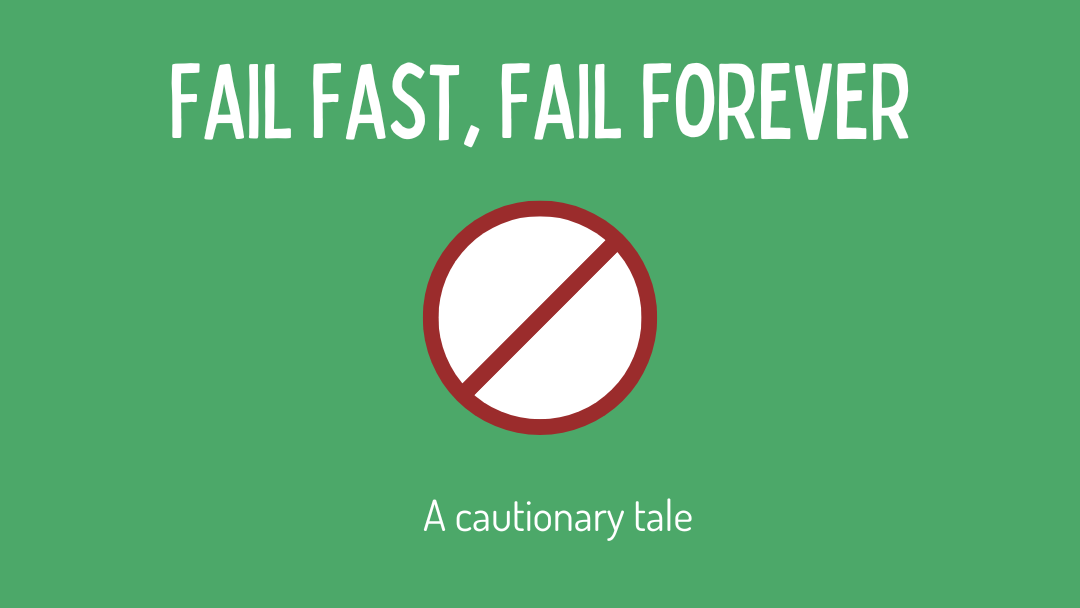Fail Fast, Fail Forever

Unveiling the Cloaked Ticking Time Bomb
The celebrated mantra “fail fast, fail forward” is often proudly declared by many a tech startup. This philosophy, though steeped in pragmatism, encourages entrepreneurs to experiment, learn from mistakes swiftly, and pivot as needed. However, within the ever-evolving tech ecosystem, this doctrine, when misapplied, can lead to an insidious and crippling problem — technical debt.
Technical debt — the term coined by software developer Ward Cunningham — refers to the eventual consequences of poor system design, software architecture, or software development within a codebase. In the race to fail fast and push ahead, many startups fall into the trap of cutting corners, creating a ticking time bomb that grows progressively destructive over time.
The Trade-Offs and Troubles of the Fast-Fail Approach
Startups are invariably fraught with pressures. The urgency to bring a product to market, attract investors, and outpace competitors often precipitates a compromise on code and system quality. A prototype developed with this mentality, while functioning, may be laced with inefficiencies, shortcuts, and hasty decisions that were made to save time initially. As these underlying issues remain unaddressed, they accumulate as technical debt.
Though expedient at the outset, this approach invariably generates a multitude of subsequent problems. As a startup scales, the codebase expands, and these foundational cracks, initially just hairline fractures, widen into chasms that threaten to destabilize the entire system. The payback of this debt comes with interest, manifesting as slower development speeds, increasing bugs and system failures, and in the worst cases, a total product breakdown.
The Unseen Spiral of Technical Debt
Interestingly, the accrual of technical debt is an insidious process. Often, its initial impact is barely noticeable, further reinforcing the false notion that the trade-off was beneficial. As time elapses and the system grows more complex, issues start surfacing sporadically. The response usually entails quick-fix patches to address these isolated incidents. This not only diverts valuable time and resources from product development and enhancement but also compounds the technical debt further, sending the startup spiraling into a vicious cycle.
This cycle erodes the ability to innovate and adapt, two crucial qualities for success in the tech world. Consequently, startups find themselves dedicating an increasingly large proportion of their resources to managing the fallout of the accumulated technical debt, rather than focusing on product development and market demands.
The High Cost of Unmanaged Technical Debt
Technical debt can bring a burgeoning startup to its knees. Perhaps the most glaring example of this occurred with the online home goods giant, Wayfair. In its early days, Wayfair hurriedly cobbled together a basic system to handle its operations, eager to capture the market. This short-term decision resulted in a codebase with a high degree of technical debt, causing inefficiencies, slower shipping times, and customer dissatisfaction as the company expanded. By 2014, they were grappling with a colossal $1 billion technical debt.
To extricate itself from this predicament, Wayfair had to dedicate an enormous amount of time and resources to completely overhaul their systems, which hindered growth for a significant period. The cautionary tale of Wayfair illustrates the high price that a startup might have to pay for unaddressed technical debt.
Learning from Past Mistakes
While the “fail fast, fail forward” philosophy offers some benefits, it is crucial to tread with caution. Startups must resist the allure of short-term gains at the expense of long-term stability. This doesn’t necessarily mean every startup should strive for perfection right from the get-go — that would likely stifle innovation and growth. Instead, startups should aim for a healthy balance, developing a codebase that is sustainable and scalable, while also being mindful of the market pressures and timelines.
To navigate this tightrope, startups can adopt Agile or DevOps methodologies, which not only promote rapid iterations but also advocate for addressing issues and inefficiencies as they arise. Furthermore, incorporating regular code reviews, continuous integration, and other best practices can help maintain the quality of code and systems, and reduce the likelihood of accruing a crippling technical debt.
The narrative of “fail fast, fail forward” does not need to become “fail fast, fail forever.” By understanding the dangers of technical debt and integrating preventive measures early on, startups can strive for a more sustainable and successful trajectory.